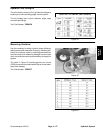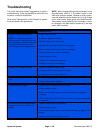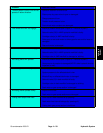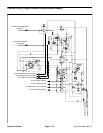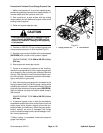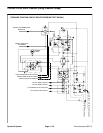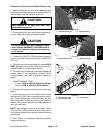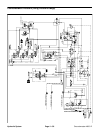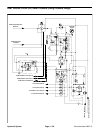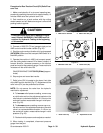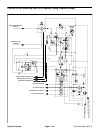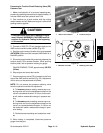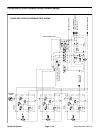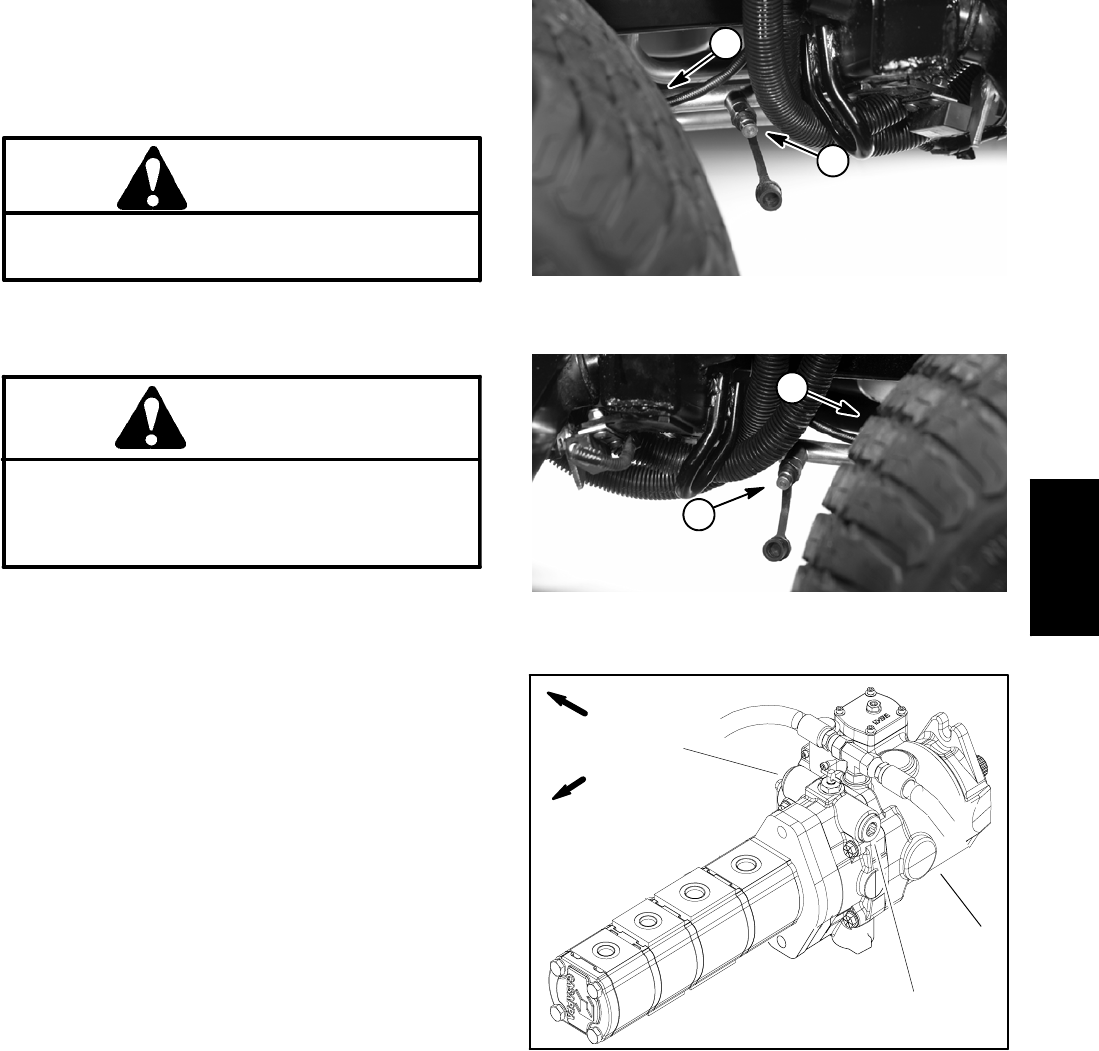
Groundsmaster 4000--D Hydraulic SystemPage 4 -- 35
Procedure for Traction Circuit Relief Pressure Test
1. Make sure hydraulic oil is at normal operating tem-
perature by operating the machine for approximately 10
minutes. Make sure the hydraulic tank is full.
Move machine to an open area, away from
people and obstructions.
CAUTION
2. Drive machine to an open area, lower cutting decks,
turn the engine off and apply the parking brake.
CAUTION
Prevent personal injury and/or damage to equip-
ment. Read all WARNINGS, CAUTIONS and Pre-
cautions for Hydraulic Testing at the beginning
of this section.
3. Connect a 10,000 PSI (700 bar) pressure gauge to
traction circuit test port for function to be checked (Fig.
22 or 23).
4. Starttheengine and move throttle to full speed(2870
RPM). Release parking brake. Make sure that trans-
port/4WD switch is in the transport position.
5. Siton seat, apply brakes fully and slowlydepress the
traction pedal in the appropriate direction. While
pushing traction pedal, look at pressure reading on
gauge:
GAUGE READING TO BE:
Forward: 3750 to 4250 PSI (259 bar to 293 bar)
Reverse: 4750 to 5250 PSI (328 to 362 bar)
6. Release traction pedal and stop engine. Record test
results.
7. If traction pressure is too low, inspect traction pump
relief valves (Fig. 24). Clean or replace valves as neces-
sary. These cartridge type valves are factory set, and
are not adjustable. If relief valves are in good condition,
traction pump or wheel motors should be suspected of
wear and inefficiency.
NOTE: Seal leakage across pilot directional valves
PD1 and PD2 in 4WD manifold can also cause low for-
ward traction pressure with reverse pressure meeting
specifications.
8. When testing is completed, disconnect pressure
gauge from test port.
1. Forward traction port 2. Left front wheel
Figure 22
1
2
1. Reverse traction port 2. Right front wheel
Figure 23
1
2
1. Forward relief valve
2. Reverse relief valve
3. Traction pump
Figure 24
1
2
3
FRONT
RIGHT
Hydraulic
System



